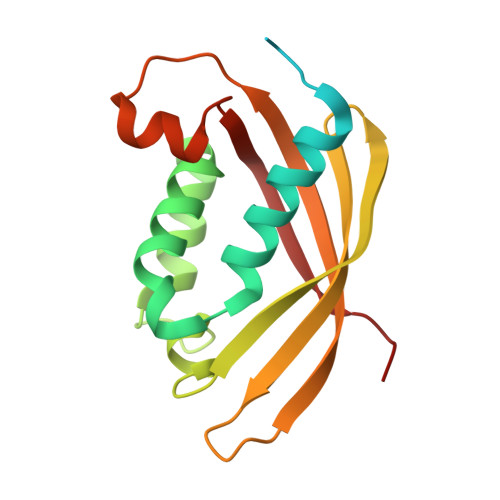Structural Insight into How Bacteria Prevent Interference between Multiple Divergent Type IV Secretion Systems.
Gillespie, J.J., Phan, I.Q., Scheib, H., Subramanian, S., Edwards, T.E., Lehman, S.S., Piitulainen, H., Rahman, M.S., Rennoll-Bankert, K.E., Staker, B.L., Taira, S., Stacy, R., Myler, P.J., Azad, A.F., Pulliainen, A.T.(2015) mBio 6: e01867-e01815
- PubMed: 26646013
- DOI: https://doi.org/10.1128/mBio.01867-15
- Primary Citation of Related Structures:
4JF8, 4KZ1, 4LSO, 4MEI, 4NHF, 4O3V - PubMed Abstract:
Prokaryotes use type IV secretion systems (T4SSs) to translocate substrates (e.g., nucleoprotein, DNA, and protein) and/or elaborate surface structures (i.e., pili or adhesins). Bacterial genomes may encode multiple T4SSs, e.g., there are three functionally divergent T4SSs in some Bartonella species (vir, vbh, and trw). In a unique case, most rickettsial species encode a T4SS (rvh) enriched with gene duplication. Within single genomes, the evolutionary and functional implications of cross-system interchangeability of analogous T4SS protein components remains poorly understood. To lend insight into cross-system interchangeability, we analyzed the VirB8 family of T4SS channel proteins. Crystal structures of three VirB8 and two TrwG Bartonella proteins revealed highly conserved C-terminal periplasmic domain folds and dimerization interfaces, despite tremendous sequence divergence. This implies remarkable structural constraints for VirB8 components in the assembly of a functional T4SS. VirB8/TrwG heterodimers, determined via bacterial two-hybrid assays and molecular modeling, indicate that differential expression of trw and vir systems is the likely barrier to VirB8-TrwG interchangeability. We also determined the crystal structure of Rickettsia typhi RvhB8-II and modeled its coexpressed divergent paralog RvhB8-I. Remarkably, while RvhB8-I dimerizes and is structurally similar to other VirB8 proteins, the RvhB8-II dimer interface deviates substantially from other VirB8 structures, potentially preventing RvhB8-I/RvhB8-II heterodimerization. For the rvh T4SS, the evolution of divergent VirB8 paralogs implies a functional diversification that is unknown in other T4SSs. Collectively, our data identify two different constraints (spatiotemporal for Bartonella trw and vir T4SSs and structural for rvh T4SSs) that mediate the functionality of multiple divergent T4SSs within a single bacterium.
Organizational Affiliation:
Department of Microbiology and Immunology, University of Maryland School of Medicine, Baltimore, Maryland, USA JGillespie@som.umaryland.edu arto.pulliainen@utu.fi.














